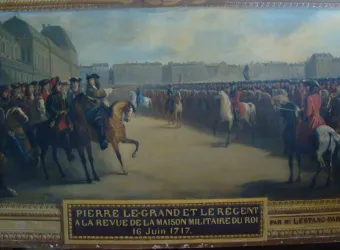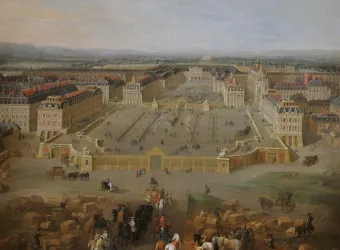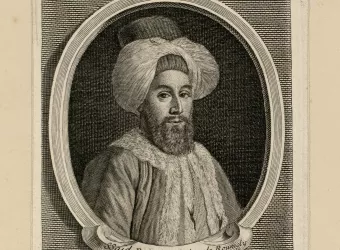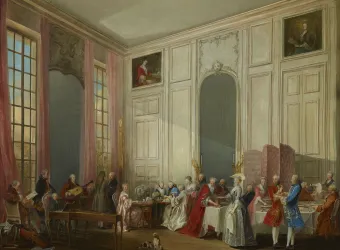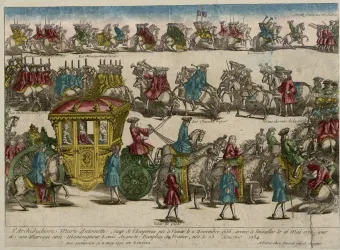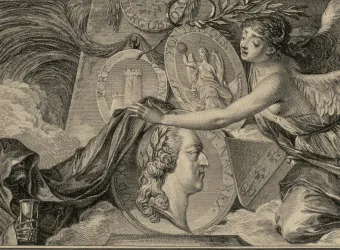This famous masked ball was put on for the marriage of the Dauphin, son of Louis XV, to the Infanta of Spain, Maria Teresa Rafaela, daughter of Philippe V, and marked the start of Louis XV’s love affair with the future Marquise de Pompadour. The lovers remained together thereafter.

The Yew Ball 25-26 February 1745
This extravagant ball was organised in the Hall of Mirrors for the marriage of the Dauphin Louis to Maria Teresa Rafaela of Spain. The real purpose of the event, though, lay elsewhere. The Court was rife with rumours of the king’s feelings for a little-known lady whom he had encountered during a hunting trip in the forest of Sénart, though the exact date remains unknown: the young and attractive Jeanne-Antoinette Poisson, wife of M. Le Normant d’Étiolles.
After the death of Mme de Châteauroux, Louis XV’s last official mistress in December 1744, all the ladies of the court were hoping to succeed her in her role. The king decided to organise a masked ball during the carnival period in which he could mingle incognito with the crowd. It was an opportunity to settle the affair.
The ball began at 11.30 pm and ended only at 8.30 am. Hundreds of coaches drove towards the palace, which had been lit up for the occasion. The masked guests arrived without invitations and gathered in the Hercules Room, where 1,500 people waited impatiently for the doors of the King’s State Apartments to open in order to mark the start of the ball. In the meantime, there were splendid buffets of fish – as required by the observance of lent – cake, pyramids of fruit and sweets, wines and liqueurs laid out for the guests.
When the doors opened, only the queen, wearing a grand Court dress, appeared with the Dauphin and the Dauphine, dressed as a shepherd and shepherdess.
-Anecdote
Later on, eight yew trees appeared. The ladies all clustered around the mysterious figures. Which one was the king?
Some swooned when one of them bowed… It must be him! Suddenly, one of the yew trees moved away from the others to approach a pretty shepherdess. The theory that it could only have been the sovereign, in rustling conversation with Mme d’Étiolles, was confirmed at the three following balls, to which the young lady was invited. The lovers met more and more often, and on 14 September 1745, Mme d’Étiolles was officially presented at the Court under the name of the Marquise de Pompadour. She remained the king’s official mistress until she died in 1764. She was replaced in 1768 by Mme Du Barry.



